
绿柱石宝石:含义、治疗用途、价值及信息
 绿柱石(yoo-klays)是一种著名的南美洲铍矿物。它通常呈无色或淡蓝色,呈天体棱柱状晶体。但绿柱石是宝石吗?没错!收藏家们经常会寻找这些鲜为人知的宝石。
绿柱石(yoo-klays)是一种著名的南美洲铍矿物。它通常呈无色或淡蓝色,呈天体棱柱状晶体。但绿柱石是宝石吗?没错!收藏家们经常会寻找这些鲜为人知的宝石。
鲜为人知?绿柱石稀有吗?是的,绿柱石是一种稀有矿物,也是一种更稀有的宝石。大型可刻面晶体并不常见,但非常难得。除了宝石爱好者圈子外,绿柱石也鲜为人知。
对一些迷人的绿柱石珠宝或水晶感兴趣吗?继续阅读,了解有关绿柱石宝石的所有信息,从它们的颜色到治疗功效、价格等等!
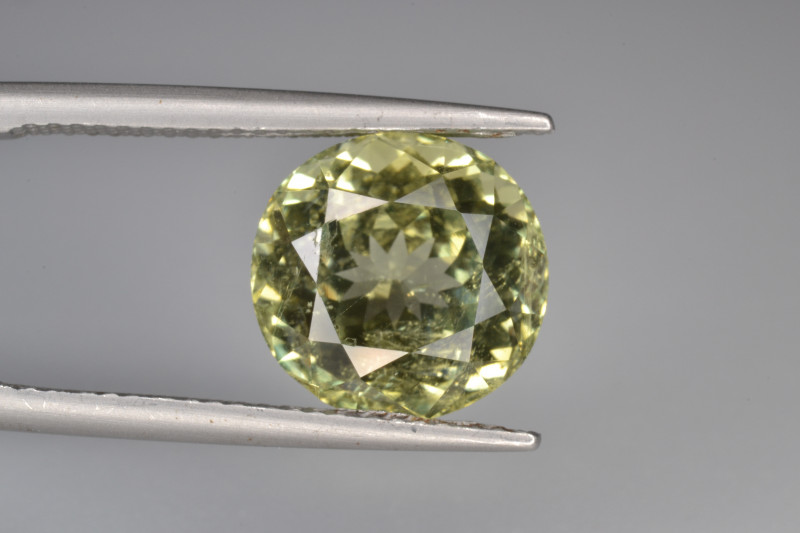
什么是绿柱石宝石?
绿柱石是一种半宝石,以形状良好、淡蓝色至无色的晶体而闻名。它是处女座和射手座的星座石。
哥伦比亚的带色域绿柱石可能会被误认为是特拉皮兹祖母绿。绿柱石宝石也可能与海蓝宝石或白色托帕石相似。因此,绿柱石可以作为三月诞生石(海蓝宝石)或四月诞生石(白色托帕石)的替代选择。
然而,绿柱石比海蓝宝石价格更高。许多卖家利用这一点,将海蓝宝石贴上绿柱石的标签,以便以更高的价格出售。
真正的绿柱石折射率比海蓝宝石的1.57-1.58折射率更高。此外,海蓝宝石的密度较低,为2.75。您可能还会将绿柱石与天青石混淆,但天青石的莫氏硬度等级要低得多,为3-3.5。
说到矿物特性,绿柱石是由什么构成的?
绿柱石规格和特性
绿柱石是一种氢氧化铍铝硅酸盐,分子式为BeAlSiO4(OH)。它并非绿柱石,但成分相似,分子式为Be3Al2Si6O18。绿柱石也参与了绿柱石的形成,但其晶系和密度与绿柱石不同。
大多数绿柱石呈明显的棱柱状和条纹状晶体。“条纹状”是指沿着晶体的平面(或“面”),存在细小、平行、略微凹陷的线条。通常,绿柱石的条纹出现在长边上,即纵向。
绿柱石晶体的末端可能像赫基蒙钻石一样呈尖状(双端),也可能呈凿状。原生绿柱石也可能形成纤维状或块状,并伴有(罕见的)晶体簇。
以下是所有绿柱石矿物数据:
莫氏硬度:6.5-7.5(同一晶体的不同侧面可能有所不同)
颜色:无色、白色、浅至深蓝色、蓝绿色、浅绿色、黄绿色、黄色、橙粉色、紫色;可能显示色域;很少有杂色
晶体结构:单斜
光泽:玻璃质(玻璃状),裂隙处略带珍珠光泽
透明度:透明至半透明
折射率:1.65-1.67
密度:2.98-3.10;津巴布韦晶体可为3.06-3.13
解理:[010] 上完美的单向解理,[110] 和 [001] 上良好的双向解理
断口:贝壳状
条痕:白色
发光:有时深色材料中会呈现微弱的荧光;长波紫外光下呈现红色,短波紫外光下呈现黄色
多色性:存在,但颜色随地点、晶体颜色和杂质而变化;浅色晶体- 蓝灰色至浅蓝色至无色或绿松石色至黄绿色至无色/浅绿色;铬色晶体- 绿松石色至紫色至无色;深蓝色津巴布韦晶体- 深蓝色至天蓝色至青色;粉红色晶体- 粉红色至橙色
科学知识讲得够多了,让我们来了解一下绿柱石的精神含义吧!

尤克拉石的含义和历史
绿柱石象征着表达、自我意识和清晰,无论是精神层面的清晰还是精神层面的清晰。它被昵称为“幸福之石”。白色绿柱石也象征着接受、谦逊和真诚。
从词源角度来看,euclase 这个名字的含义是什么?
“euclase” 这个名字来源于两个希腊词: eu意为“容易”, klasis意为“破碎”或“破损”。这个含义反映了这种晶体完美的解理,这使得它特别容易破碎。
历史
1785 年,第一批发现的绿柱石样本来自巴西。1785 年,法国博物学家约瑟夫·董贝 (Joseph Dombey) 将它们带回欧洲,著名的法国矿物学家勒内·朱斯特·阿尤伊 (René Just Haüy) 在那里研究了这个新的宝石品种。
Haüy 于 1792 年发表了一篇论文,题为《绿柱石:物理学、自然历史和艺术的观察》 (标题译自法语),其中首次对绿柱石进行了描述(并命名)。
同年,即1792年,有报道称在俄罗斯乌拉尔山脉奥伦贝格地区附近发现了绿柱石。近200年后的1962年,澳大利亚政府化学实验室组织发表了在澳大利亚发现的第一块绿柱石的发现。
就在2016年,一种新的绿柱石颜色也出现了。巴西的矿工发现了少量橙粉色绿柱石,颜色类似于帕帕拉恰蓝宝石。这些宝石于2018年上市,但供应量迅速减少。
从历史转到治疗,桉树有什么用处?
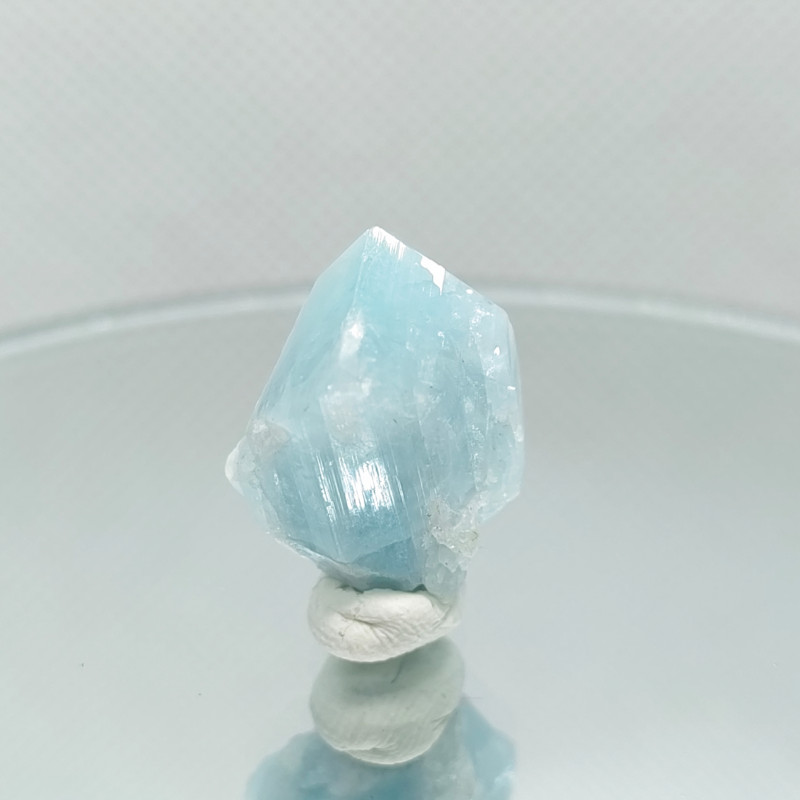
绿柱石的治疗特性
和所有宝石一样,绿柱石也被称为具有多种疗愈功效的宝石。具体的疗愈功效会根据绿柱石的颜色而变化。
当绿柱石与海蓝宝石相似时,它拥有蓝色宝石的特质,能够唤起平静、赋予智慧、激发诚实。同时,白色绿柱石与其他白色水晶一样,可以提升精神觉知,净化负面空间,并增强冥想能力。
那么,绿柱石在身体、情感和脉轮治疗中有何用途?
身体康复
在水晶治疗社区中,常见的绿柱石物理用途包括:
舒缓肌肉和关节疼痛或紧张
清除伤口细菌
抑制肌肉痉挛
增强视力
那么情感用途呢?
情绪疗愈
“幸福之石”的昵称源于这样一种信念:绿柱石能激发人们在创造性追求中获得快乐、带来好运,当然还能让人快乐!
水晶治疗师称赞这种宝石能帮助佩戴者戒掉不良习惯。他们说,这种宝石能提供能量,让你用更符合目标的积极习惯来取代这些习惯。
脉轮疗愈
脉轮是人体的能量中心,它能帮助你的身心和精神的各个方面发挥最佳功能。脉轮必须保持畅通才能发挥其功能,而阻塞则会阻碍它。这时,水晶就派上用场了!
无色绿柱石是开启第三眼和顶轮的脉轮石,助您达到最高的灵性境界。而蓝色绿柱石则能开启喉轮,帮助您自信地说出真相。

绿柱石宝石特性
任何绿柱石的客观价值主要取决于其稀有性。然而,其他评估因素还包括颜色、切工、净度、克拉重量和处理方式。
首先,绿柱石是什么颜色的?
颜色
用于宝石的绿柱石通常为无色、浅蓝色或浅绿色。晶体也可能呈黄色至绿色,或以这些颜色为底色(蓝绿色或黄绿色)。津巴布韦出产的绿柱石中,以深蓝色为主。
有些蓝色宝石带有绿色斑点,而有些则呈现出从浅蓝色到深蓝色或从无色到蓝色的色域。并非所有绿柱石都带有花纹。
绿柱石的颜色成因取决于其色调。大多数绿柱石的颜色源于不同含量的铁杂质,或由二价铁 (Fe2+) 向三价铁 (Fe3+) 或钛 (Ti4+) 的转变。
产自哥伦比亚的蓝绿石呈现出异常鲜艳的绿蓝色,其颜色由铬和/或钒构成。橙粉色则源自锰(粉色)和铁(橙色)杂质。
饱和度高的宝石价值不菲。然而,最稀有、最珍贵的颜色是紫色。
切
绿柱石硬度适中,但其完美的解理结构使其刻面颇为困难。尽管如此,宝石切割师(宝石切割师)仍将绿柱石打造出众多刻面,例如祖母绿形、榄尖形和椭圆形。
尽管无色的绿柱石看起来有些无趣,但如果切割得当,它会发出耀眼的光彩(从内部反射的光线)。
凸圆形宝石或雕刻等未经过刻面的宝石不太常见。
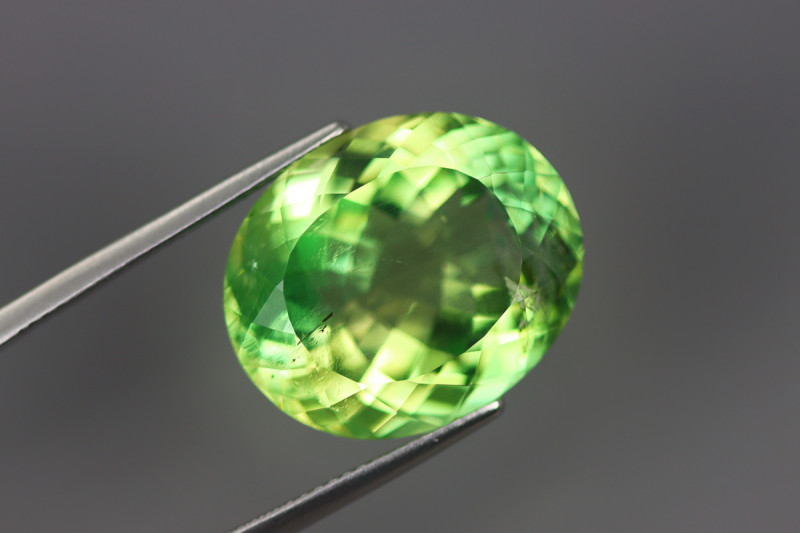
明晰
绿柱石的净度(衡量宝石中可见内含物的指标)是判断宝石是否达到宝石级的关键。净度好的宝石非常稀有,价值也很高。
绿柱石中常见的内含物是石英和类似黄铁矿的绿柱石。微量杂质(例如铁和铬)会形成色域。
一些带有色域的蓝绿色哥伦比亚绿柱石含有三相(流体被困在空腔中,并分裂成不同的相)——液体、蒸汽和岩盐包裹体。1996年研究的主要样本也含有高含量的锗杂质。
1980 年研究的巴西透明绿柱石显示出赤铁矿片、 金红石针、 磷灰石晶体和锆石颗粒的特殊内含物。
2021年研究的另一颗产自巴西的无色绿柱石,呈现出针状晶体、悬浮的白色至红棕色纤维,以及一个圆柱形小腔内含有气泡的棕色液体。专家们尚不确定这些内含物的成分。
克拉重量和尺寸
几乎所有绿柱石晶体都很小,无色绿柱石通常只有1英寸(2.54厘米)长,5-6克拉重。然而,一些刻面无色绿柱石的重量可达20克拉左右。大多数绿色和蓝色绿柱石宝石的重量为2-3克拉或更低。
巴西和哥伦比亚出产的绿柱石晶体异常巨大。最大的绿柱石——史密森尼博物馆收藏的一颗144克拉的黄绿色样本——产自巴西。在巴西发现的由稀有的紫色绿柱石制成的宝石重量已达10克拉。
治疗
辐照处理通常使无色绿柱石变成浅绿色或蓝色。
在人们开始砍伐和处理绿柱石之前,绿柱石在自然界中是如何形成的?
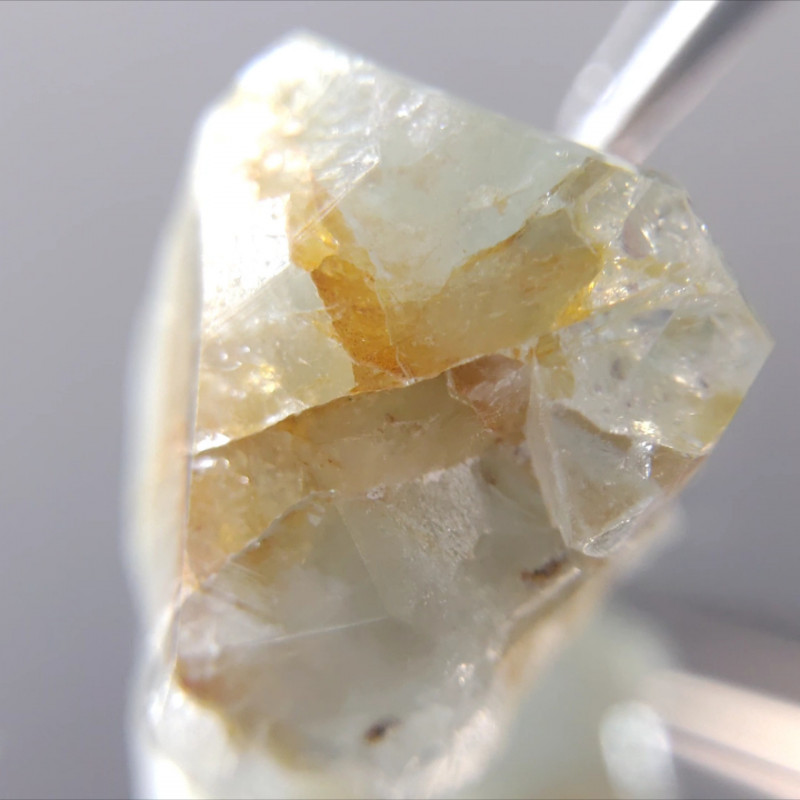
绿柱石的形成与来源
绿柱石通常形成于花岗岩伟晶岩中,当绿柱石矿物通过热液交代作用分解时。含有其他元素的热水会分解绿柱石的成分。分解后的元素在冷却过程中重新形成绿柱石。
在高山地区,绿柱石的形成方式类似,在热液脉中形成,但温度较低。有时,这种矿物在中等温度下形成于被称为黑色页岩的沉积泥岩中。纤维状或块状绿柱石则形成于片岩或千枚岩(最初为页岩的变质岩)中。
从地理角度来看,绿柱石在哪里发现?
采矿地点
巴西是宝石级绿柱石的首要产地,尤其以粉红色或紫色、大尺寸或高双折射率等罕见特性而闻名。哥伦比亚和津巴布韦也是重要的绿柱石产地,以其鲜艳的色彩而闻名。
绿柱石晶体的其他来源包括:
澳大利亚
奥地利阿尔卑斯山
中国
德国
爱尔兰
缅甸
挪威
俄罗斯
坦桑尼亚
美国(科罗拉多州)
准备好浏览出售的桉木了吗?接下来我们会详细分析价格!

绿柱石的价格和价值
绿柱石的稀有性使其成为最昂贵的矿物之一。最珍贵的绿柱石通常拥有良好的净度,并带有浓郁的绿色、蓝色或紫色。
刻面绿柱石的批发价格范围(按颜色)如下:
浅蓝色:每克拉 10-103 美元,彩色宝石每克拉价格为 260-360 美元
黄绿色:每克拉35-150美元
无色:每克拉100-150美元
绿色:每克拉 150-450 美元,最高品质每克拉接近 5,000 美元
黄色:每克拉150-580美元
粗糙绿柱石标本的批发价格范围如下:
浅蓝色:每克拉 5-15 美元,有些甚至达到每克拉 30 美元
无色:每克拉 10-15 美元,无瑕疵的原石每克拉可达到 140 美元
双色无色和蓝色:每克拉 30-60 美元
黄色:每克拉 3-30 美元
就珠宝而言,无色或浅蓝色的绿柱石原石吊坠(不含昂贵金属)通常每件售价70至140美元。津巴布韦产的深蓝色绿柱石原石吊坠售价可达1200美元。
无色刻面宝石戒指每克拉售价约为 700 美元,蓝色刻面宝石戒指每克拉售价约为 250 美元。
最后,我们将讨论宝石的护理。
桉树的保养和维护
选择珠宝时,像绿柱石戒指这样易损的珠宝应该进行保护性镶嵌。避免使用机械或蒸汽清洁器。清洁绿柱石时,只能使用蘸有温水和温和清洁剂的软刷。请与其他宝石分开存放。
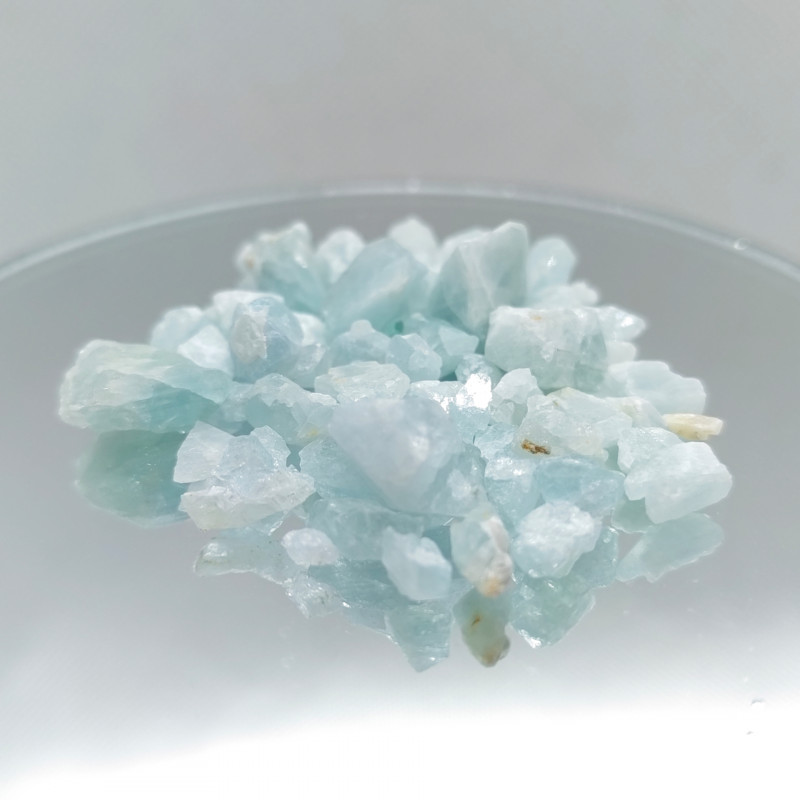
想要一块属于自己的“幸福石”吗?
对宝石收藏家和水晶治疗师来说,绿柱石是独一无二的珍宝,拥有神秘的属性。随着时间的推移,它的稀有程度只会越来越高,所以现在正是投资这种宝石的最佳时机。
无论您是想装饰自己的空间还是寻找散发乐观气息的珠宝,绿柱石都是色调柔和却又强大的选择!
搜索Gemstone Encyclopedia
最新的文章
彩虹格纹日光石是一种长石,由于内部含有各种包裹体,呈现出三种绚丽的光学效应。它绚丽多彩的光泽和格纹图案使其成为收藏家梦寐以求的珍宝!
12th Jan 2026
文章分类
How To's is where you will find helpful articles from gem Rock Auctions on how to cut gemstones, select gemstones and buy gemstones.
9文章数

